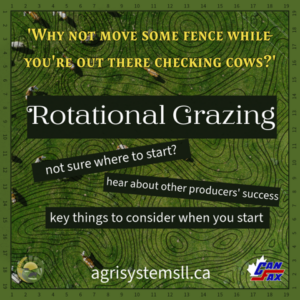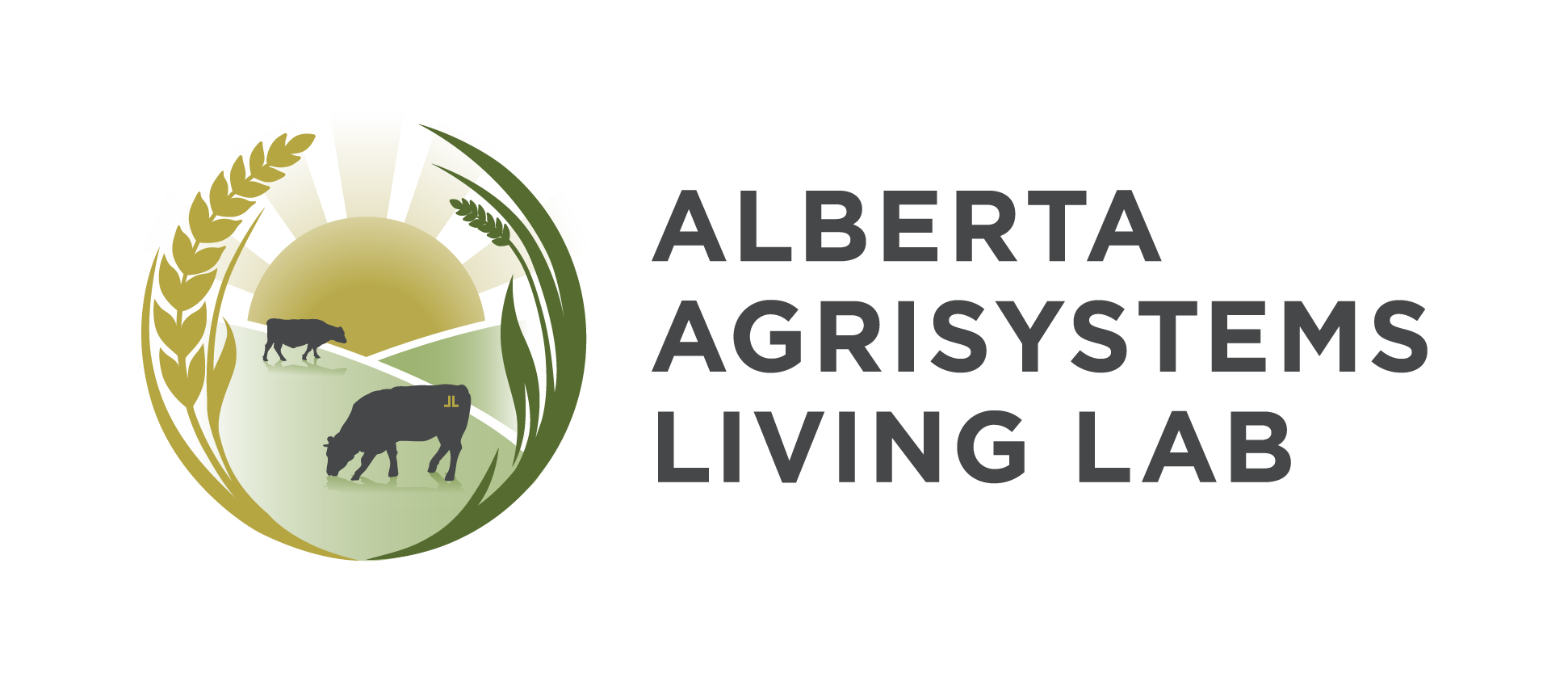Small Steps, Big Gains: How Starting Slow Leads to Grazing Success
This article is one of a series of case studies on forage beneficial management practices from Alberta Agrisystems Living Lab and Canfax. It is reprinted on BeefResearch.ca with permission.
Rotational grazing can mean different things to different people. This Beneficial Management Practice (BMP) is often adopted at varying levels of intensity, depending on timing and amount of precipitation, water source or labour availability. Rotational grazing can offer many benefits, including a more evenly grazed field, enhanced soil health, improved water quality and preserving the productivity of your pastures. Rotational grazing systems can also offer more options in dry conditions, but back-to-back droughts, water availability, fencing and labour can make implementation of this BMP a challenge.
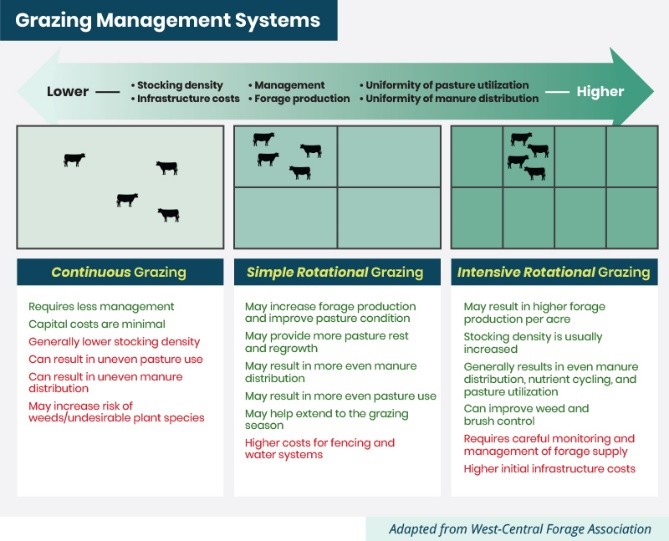
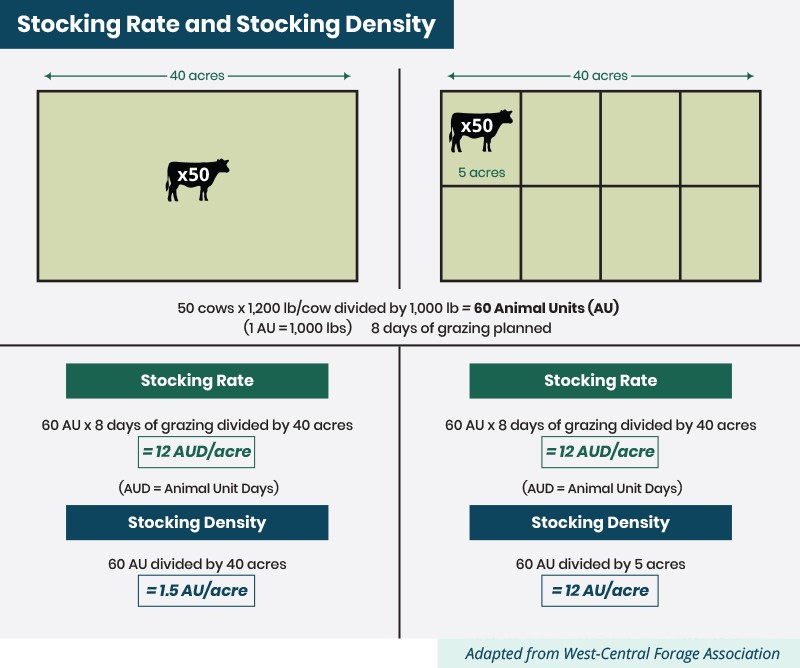
Three Alberta producers have shared their journeys around the adoption of rotational grazing and the challenges they have overcome to be successful. They hope that by sharing their stories other producers can gain insight and knowledge from their experiences:
Key Takeaways When Considering Rotational Grazing:
- Start slow: Dividing a continuously grazed pasture into two sections and allowing one half of the pasture to rest is a good start. Seeing improvements in pastures can take time, and depends on stocking densities, rainfall, and length of rest before plants are re-grazed.
- Build a system around the water source: When building a rotational grazing system, keep your water source top of mind, either with a portable solar water system with portable fencing or a central water source with surrounding permanent paddocks.
- Start with temporary fencing: Rather than immediately implementing permanent fencing, temporary fencing can be a short-term cost-saving measure and allow for greater flexibility.
Planning Fields Takes Time
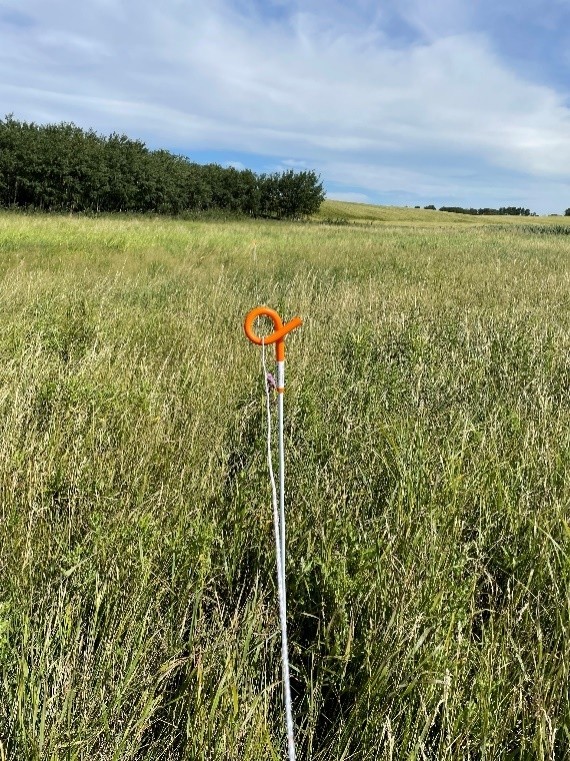
Kelly and Jill Burkhardt started operating a fifth-generation farm in the mid-2000s, starting with a small cowherd and background operation. Located between Wetaskiwin and Camrose, Alberta, they now raise a mix of cow-calf, background and crop enterprises. They have tripled their herd to 175 head of mature cows, and their land base has expanded with additional rented acres. They have tripled their backgrounding operation and doubled their grain land. The expansion helped them achieve their goal of staying full-time on the farm. Kelly and Jill both have degrees in range management; together with schooling and experience, they are extremely knowledgeable in pasture and grazing management.
The Burkhardt’s have had rotational grazing as a part of their operation since the beginning. Kelly built some fences for their rotational grazing setup on one of their quarter sections while he was still in school.
All their rotational grazing systems have a permanent perimeter fence with portable fencing to split up paddocks. Typically, Kelly and Jill are understocked when grazing. Therefore, they do not worry about having enough grass in dry years. “We always say that we’re here to grow grass, not beef.”
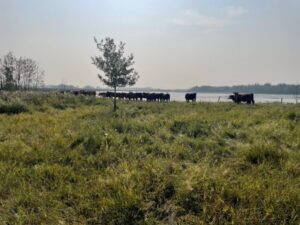
Through the years, they have increased the productivity of pastures. Their rotations are guided by grass growth, and Jill describes this as the “art of range management.” They often rely on the height of the grass. For example, if they graze down to three inches, they will wait to graze that section until the growth is back to five or six inches in height. Pastures and timing of grazing vary year to year, and it takes time to get to know how quickly grass will regrow after grazing.
Recently, Kelly and Jill implemented an adaptive multi-paddock grazing system for the Alberta AgriSystems Living Lab in an existing field that had not previously been incorporated into their rotational grazing system. This parcel of land was not continuously grazed but was not part of their intensive grazing system either. Previously, they had two smaller sections of about 20 and 60 acres in this field, rotating from one to the other to give them rest. External financial support was utilized to install temporary electric fencing.
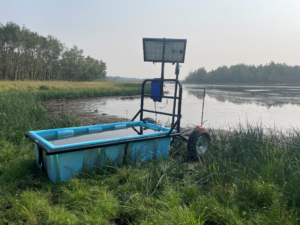
They spent time reviewing a map of the land base and trying to figure out a fencing and water system. The field runs along a lake adjacent to their neighbours’ quarter that also runs alongside the lake, and they had to get a solar water system to make the rotational grazing system work. Building their rotational grazing system around a water source was challenging but necessary. Each paddock is pie-shaped, leading to the portable water trough. “To get water, we just move the fence around the trough, giving them access.” They also have the option to move the water trough between all their rotational grazing fields for future rotational setups.
Kelly and Jill advise producers to “think outside the box, and don’t get too stuck in what everybody else is doing.” Implement rotational grazing slowly to let your land adjust, even if it only breaks a continuous grazing section into two pieces. That way, you are still helping the grass and letting it rest and recover. This way, you don’t burn yourself out. New grazing systems take time to adjust and see improvements.
Top Tips
- Think outside the box: When designing your rotational grazing system, it does not have to look like others you have seen.
- Be patient: It takes time to see improvements.
Permanent and Temporary Fencing
Assar Grinde and his family run about 300 cow-calf pairs in a rotational grazing system, first established by his father in the 1980s. His father was a big believer in rotational grazing and joined the Grey Wooded Forage Association in the 1980s, which helped him learn about rotational grazing practices and how to set up his system. Assar’s father originally started by strip grazing with yearlings.
Assar set up 30 permanent paddocks ranging in size from 10 to 20 acres using a single-wire high-tensile fence for a long-term rotational grazing setup, along with temporary fencing for more intensive grazing. The single large pasture allows for the ease of cattle movement to each paddock without having to haul them to new pastures. A great advantage is having fewer herd groups and close paddocks to move cattle to for grazing. He keeps their cow-calf pairs in one group, saving on labour, and has a separate group of replacement heifers. The advantage of keeping the replacement heifers separate is that it allows them to breed their heifers with a selected heifer bull.
They save certain areas to have stockpiled grass available each year for calving (between late April and early June). Near the end of June, when the last few cows are finishing calving, cattle are placed into the rotational grazing system. They usually complete about two rotations on all their grazing land each summer. In a typical year, Assar moves cattle every three to four days. This is a faster rotation but allows for greater rest periods for grass recovery. Assar explained that he grazes the grass to about half its length before taking the cattle off and allowing it to regrow back. If regrowth is slow, he will leave cattle in some paddocks longer to allow the other paddocks time to regrow. Also, as fall nears, he will leave cattle in grazing sections longer, allowing cattle to graze more.
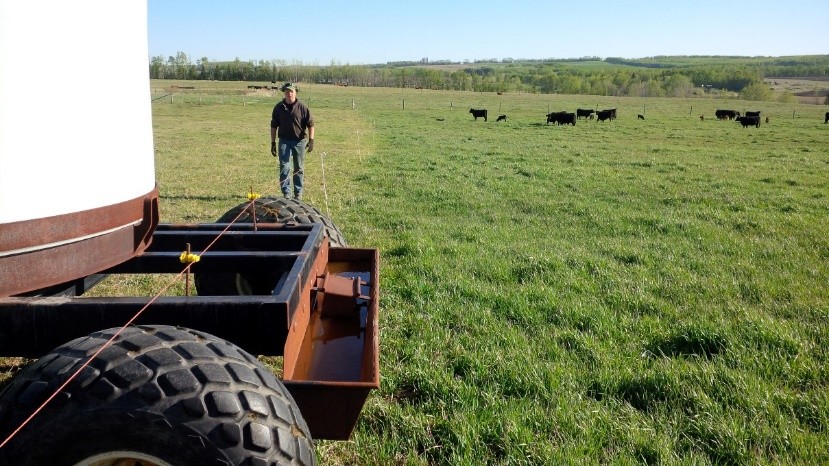
A recent addition to their rotational grazing system was the creation of paddocks within 290 acres of pastureland with some brush cover. It was originally nicknamed the “holiday pasture,” to allow them to be able to leave the farm knowing that the cattle would have sufficient grass. Previously the pasture was used to provide 12-14 days of grazing, but Assar has since converted it to match the existing rotational grazing system.
Assar explained, “So this piece that we did for Living Labs, it has a creek running north to south through it which we used for water. We did two or three east-west fences, and I added permanent single-wire, high-tensile electric on either side of the creek.” Rather than going through the whole creek valley as a continuous grazing parcel, the separated paddocks allow for greater rotation and rest.
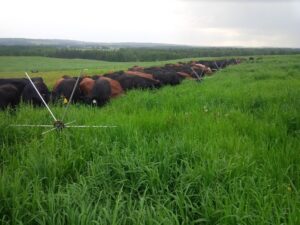
Assar noted that if a producer rents or owns land in smaller sections and multiple locations, this creates challenges for rotational grazing. This adds to the costs of rotational grazing through labour and fuel to haul cattle and can impact adoption of more intensive rotational grazing systems. Additionally, there will generally be longer grazing periods before moving cattle to the next pasture due to the time required to move between locations.
Since Assar has been doing rotational grazing, it has been difficult to see improvements in pasture health and growth when comparing year to year. Instead, improvements are more easily noticed by comparing them over a longer period. Pasture regrowth can be a limitation in years with poor moisture. The year’s rainfall will greatly impact the success of a new or more intensive rotational grazing system.
Overall, their rotational grazing system allows them to have more cattle on their current land base. Assar advises producers to base their rotational fencing design on the central water source. Additionally, having pre-fenced paddocks helps with a long-term rotational grazing system to limit the time needed to set up and take down fencing. As Assar stated, “There is some value in installing only certain permanent fences the first year.” When first setting up a rotational grazing system, you can then utilize both permanent and temporary fences to adjust grazing rotations from year to year.
Top Tips:
- Vary field sizes: Paddocks of different sizes allow for flexibility in grazing durations which can be matched to forage growth or other time commitments.
- Mix permanent and temporary fencing: This can help maintain the desired rotation, while still providing flexibility on field size and length of rotations.
Intensive Grazing for Uniform Grazing
Derek Friend, located in Central Alberta, has recently shifted from a continuous grazing system to an intensive rotation, moving cattle as often as every day. As the saying goes, “A good cattleman checks his herd every day,” to which Derek adds, “why not move some fence while you’re out there?”
Derek has his herd intensively graze each paddock before moving them to get a uniform graze. Under his previous continuous grazing system, cattle would have time to pick and choose the best plants and ignore the less desirable ones. Under this frequent rotation management, cattle do not have as much time to search for good bites and consume all available forage. This also creates some competition for the tastiest plants in each paddock, increasing the grazing speed. Derek noticed his herd gradually became more docile after implementing this more frequent rotation because he was working with his cattle more often.
Temporary electric fencing is currently used for all paddocks, but he does have plans to add more permanent fencing, especially on paddocks that border roads. For the time being, the temporary fencing provides plenty of flexibility for moving the herd. The temporary fencing adds the flexibility of adjusting paddock size to be increased during busy weeks and decreased during the slower parts of the year when more time can be spent moving cattle. External funding was used to help finance fencing costs.
A trough fed by 2000 feet of ¾ inch pipe and moved to each paddock is enough to provide water for the herd. Derek estimated this watering system would probably be suitable for up to 200 head, but after that, a more rigorous water system would likely be needed, especially if the paddock size increased.
Because this more intensive rotation has only recently been introduced, a before-after comparison of cow body condition or calf weights is not yet known. While a more intense rotation does require more hours out in the field, Derek says the enjoyment of being out and moving cattle makes the change worth it.
Top Tips:
- Find funding options for set-up costs.
- Use rotational grazing to manage plant species and diversification in your pastures.
Click here to subscribe to the BCRC Blog and receive email notifications when new content is posted.
The sharing or reprinting of BCRC Blog articles is typically welcome and encouraged, however this article requires permission of the original publisher.
We welcome your questions, comments and suggestions. Contact us directly or generate public discussion by posting your thoughts below.
